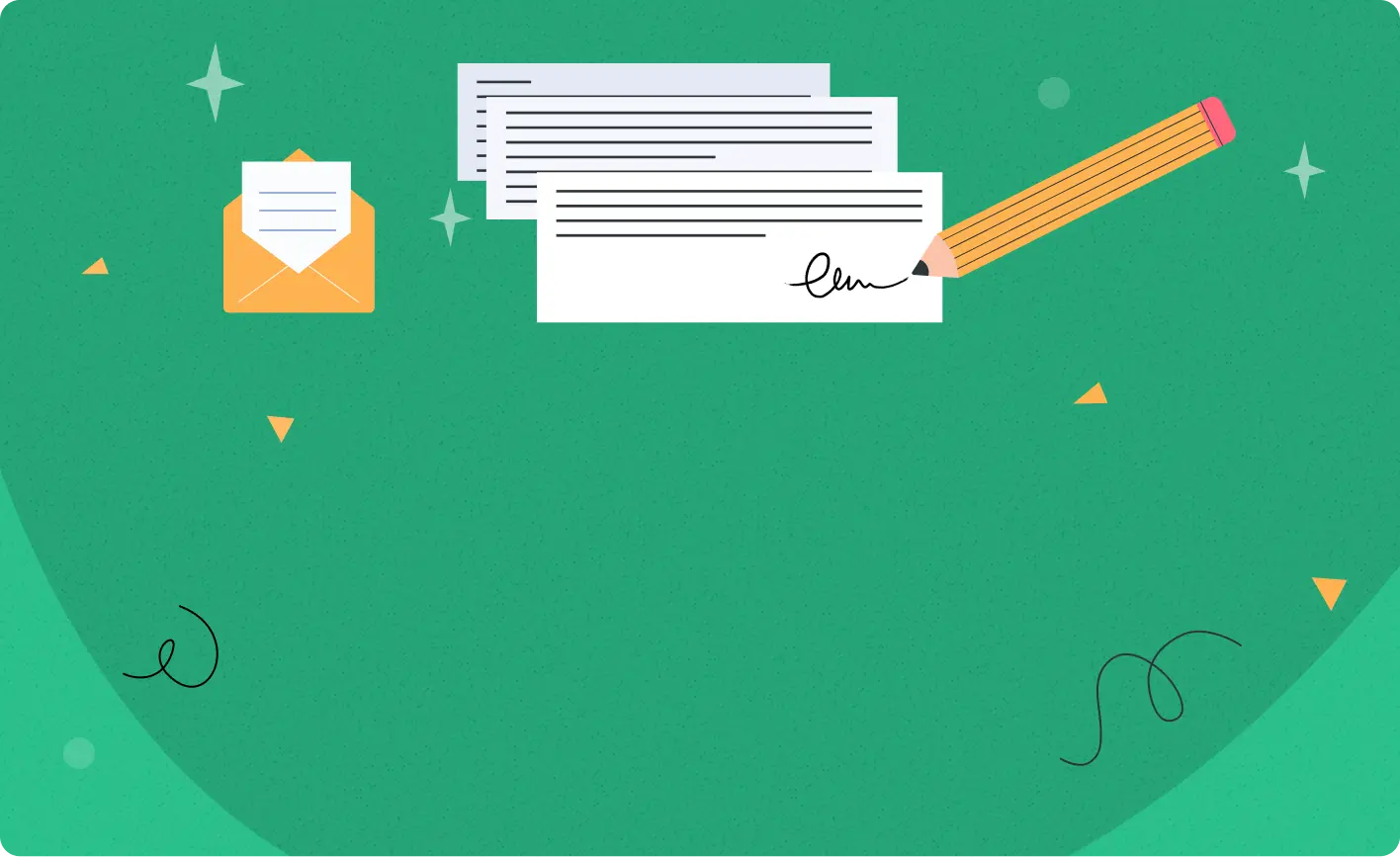When crafting a cover letter, it's not just about the words—the format matters just as much. One question that often comes up is, Should I indent paragraphs in a cover letter? Even small choices, like indentation, can influence how professional your letter looks to a hiring manager.
So, what's the answer?
Since a cover letter follows the format of a business letter, the general rule is NOT to indent your paragraphs. Modern business writing prefers block paragraphs with spaces between them, giving your letter a cleaner, more professional appearance.
Before we dive deeper into the topic, let’s quickly review some key insights from this article.
Key takeaways
- Formatting matters just as much as the content in a cover letter.
- Modern cover letters favor block paragraphs over indented ones.
- Block paragraphs create a cleaner, more professional appearance.
- Block formatting aligns with Applicant Tracking Systems (ATS) used by many companies.
- Use clear fonts, proper spacing, and alignment for a professional look.
- Block paragraphs are typically the safest choice, but tailor formatting to industry standards
Going forward with formatting, let's clear up what a cover letter is and why its structure really matters.
Drop your resume here or choose a file.
PDF & DOCX only. Max 2MB file size.
What is a cover letter and why formatting matters
A cover letter is your formal introduction to a potential employer, giving a snapshot of your skills, work experience, and why you’re the right fit for the role. It's more than just a summary—it's a chance to show your personality and enthusiasm for the job. Since it’s often the first impression you make, how you present it matters just as much as what you say.
Proper formatting, including decisions like whether or not to indent paragraphs, directly affects how professional your cover letter looks. A polished document shows attention to detail and professionalism, traits that hiring managers highly value.
Say goodbye to formatting headaches. Let our cover letter builder help you create a stunning letter instantly!
PRO TIP
Good formatting can make all the difference. A clean, well-structured letter grabs attention before recruiters dive into your resume.
Now, let’s take a step back and see how cover letter formatting has changed in recent years.
Traditional formatting: indentation vs. block paragraphs
Historically, cover letters and other formal letters were written with indented paragraphs, a style that signified structure and elegance. This approach was common when letters were handwritten or typed, where indentation helped organize the text visually.
However, as technology and business communication have shifted towards digital formats, the way we format letters has evolved. Block paragraphs, where paragraphs are separated by a blank line without indentation, have become the modern standard. This style enhances readability, especially on digital screens, and provides a cleaner, more streamlined look.
Your cover letter should do two things: show you've done your homework, and show how you fit in.
Peggy Klaus
In cover letters, block paragraphs are now preferred because they”re easier to follow, particularly for hiring managers who are often scanning through multiple applications. The clean separation between paragraphs makes the content easier to digest quickly and ensures that key points about your skills and experience stand out.
Adopting block formatting in your cover letter not only reflects current professional standards but also signals that you understand and follow modern business practices. Whether your letter is read on a screen or printed out, the clarity and professionalism that block paragraphs offer can make a strong impression and help you present your qualifications in the best possible light.
Modern business communication standards
In today’s professional environment, the block paragraph format is the most commonly accepted style for cover letters. Hiring managers are accustomed to seeing block text. This format creates a more organized and visually appealing document, especially when viewed electronically, which is how most resumes and cover letters are submitted.
Using block paragraphs reflects that you're aware of modern business communication standards, which can give you a subtle advantage in the hiring process. It demonstrates professionalism and attention to the conventions of today’s workplace.
Many companies use Applicant Tracking Systems to scan documents, and block formatting helps ensure your cover letter is easy to read and properly processed by these systems.
Additional formatting tips for your cover letter
Beyond paragraph structure, there are a few other formatting rules to keep in mind for your cover letter to ensure it looks clean and professional:
Tips for a professional cover letter
- Line spacing: Use single spacing within paragraphs and double spacing between paragraphs to make your letter easy to read. This keeps the text from feeling cramped while providing enough white space for readability.
- Font: Stick with a professional, easy-to-read font like Arial, Rubik, or Times New Roman. Choose a font size between 10 and 12 points, ensuring your letter is legible but not too large or bulky. Avoid using overly decorative or hard-to-read fonts, which can appear unprofessional.
- Margins: Keep margins between 1" and 1.5" on all sides. This creates a balanced look and prevents the text from crowding the edges of the page. If your cover letter is longer than one page, first look at tightening the content before adjusting the margins.
- Alignment: Always left-align your text. This is the standard for business letters and helps create a neat, uniform appearance. Centered or right-aligned texts can be distracting and look unprofessional.
- Length: Aim for one page, no more than three to four paragraphs. Hiring managers appreciate concise cover letters that get to the point without unnecessary details.
- File format: If submitting your cover letter digitally, save it as a PDF to preserve the formatting across different devices. Word documents can sometimes display inconsistencies, depending on the software version.
Industries in the u.s. that may prefer indented cover letters
In the U.S., most industries follow modern business writing standards, which favor block formatting without indentation for cover letters. However, highly traditional sectors, such as academia, legal professions, and some government roles, may occasionally expect more formal or classic approaches to letter writing. That said, even in these fields, block formatting has largely become the norm due to its readability and alignment with digital document standards.
If you're applying to a particularly formal institution or organization, it might be worth reviewing their specific preferences, but generally speaking, indentation is no longer a common expectation in most industries.
Now, let’s look at an example of a well-formatted cover letter that follows modern standards.
Example of a great cover letter
In the example below, we have a cover letter for someone applying for a project manager position.
Instead of using traditional opening phrases, the letter starts with a story and relevant context—an approach that can immediately grab the recruiter’s attention. By underlining key achievements and directly tying them to the role, this strategy creates a strong connection between the candidate’s experience and the job they’re seeking.
Project manager position
[Dear/Hello/Hi] [Recruiter's Name],
Last year, I led a cross-functional team on a $2M software development project that required coordinating five departments—engineering, marketing, sales, finance, and customer support—while adhering to tight deadlines.
By creating a culture of open communication and leveraging each team member’s strengths, we not only met our deadlines but exceeded expectations in terms of quality and efficiency. This experience strengthened my passion for managing projects and guiding teams toward success, no matter the challenges.
This is why I am excited to apply for the Project Manager position at [Company Name]. With over [Number] years of experience in project management, I have developed a solid foundation in leading teams, managing timelines, and delivering projects on time and within budget. My expertise in [mention key skills, such as Agile methodologies, risk management, or stakeholder communication] has been critical to the success of numerous projects, and I’m eager to bring those skills to your team. I’m particularly drawn to [Company Name] because of its [mention something specific about the company’s culture, values, or projects]. Your focus on [specific aspect] aligns perfectly with my approach to project management.
I am confident that my skills in leadership, organization, and problem-solving will help drive successful outcomes for your team. I would welcome the opportunity to discuss how my experience can contribute to [Company Name]’s continued success. Thank you for considering my application, and I look forward to connecting with you soon. You can reach me at [Your Phone Number] or [Your Email Address].
Sincerely,
[Your Name]
Conclusion
To wrap things up, whether or not you indent your paragraphs can influence the overall look and professionalism of your cover letter. Modern standards favor block paragraphs with spaces between them, making your letter easier to read and more visually appealing. By following this approach, you present yourself as detail-oriented and professional, which helps leave a lasting impression on hiring managers.




